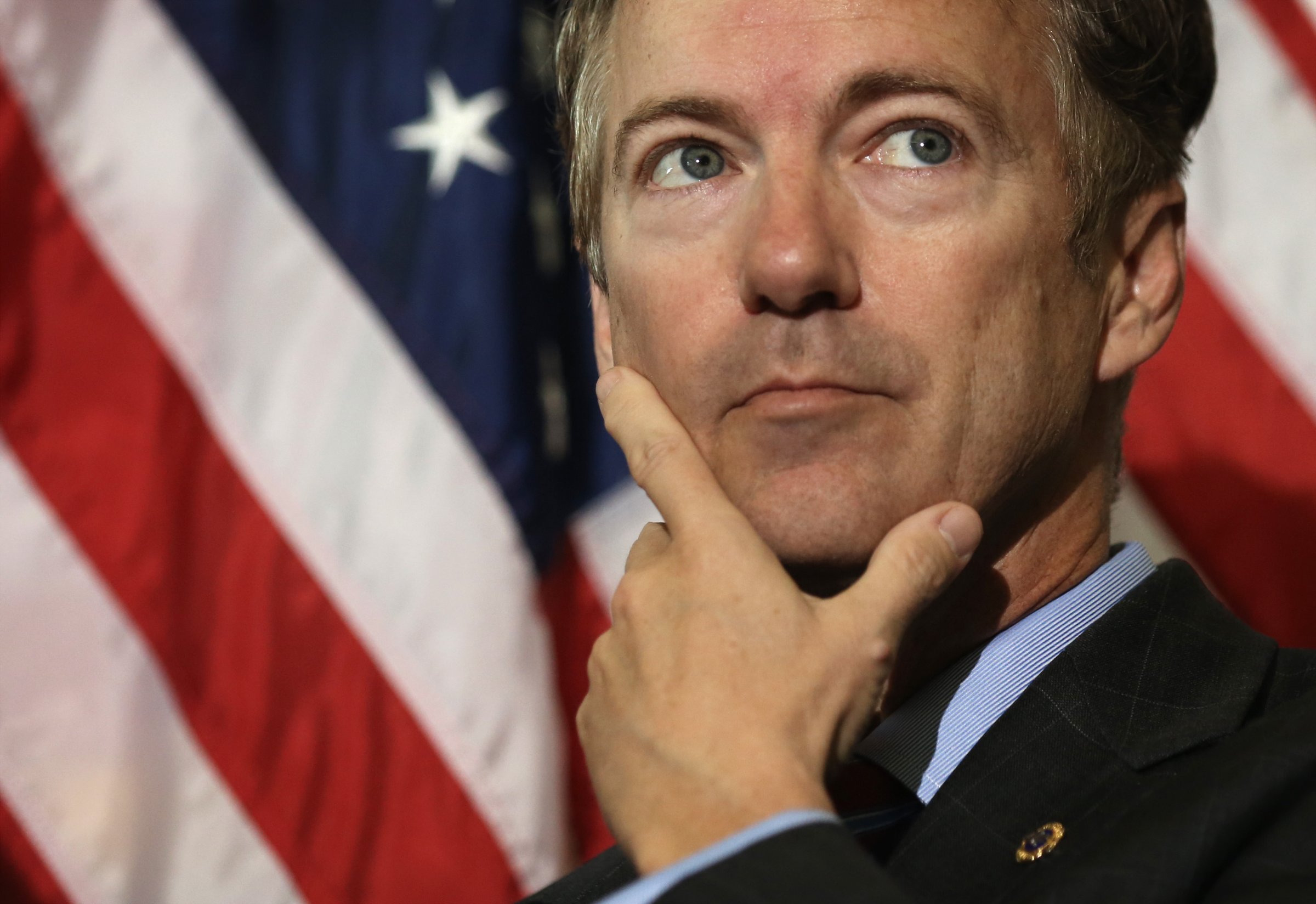
Trolling has always been a part of presidential politics, but few candidates have taken to it quite as aggressively as Sen. Rand Paul.
In recent months, the Kentucky Republican has used social media to post snarky, provocative comments aimed at his likely opponents in the 2016 Republican presidential primary as well as Democratic frontrunner Hillary Clinton.
In December, he took to Twitter to repeatedly criticize Florida Sen. Marco Rubio’s opposition to opening relations with Cuba in what many observers argued was straight-up trolling. In January, he posted a jokey “secret tape” of Clinton and former Florida Gov. Jeb Bush talking about the White House on SoundCloud. And on Valentine’s Day, he posted a mock Pinterest page for Clinton that showed her ideas to remodel the White House (including a heart-shaped hot tub and a girly Oval Office).
In many ways, Paul’s trolling is the obvious next step in presidential politics. President Obama has already adopted a lighter tone online, starring in BuzzFeed videos, submitting to YouTube stars’ goofy questions and capitalizing on memes, while Speaker John Boehner has gone ahead and used Taylor Swift GIFs to troll the White House’s plan to make community college free, among other things. It was only a matter of time before a presidential candidate started speaking in the Internet’s native language of snark.
Vincent Harris, Paul’s chief digital strategist behind the trolling, told Yahoo! News that the edgy tone is necessary to cut through the clutter:
“The strategy and the number one problem that people have in politics is just getting their information across to somebody — how do you reach somebody at all,” he said. “News and information has to be entertaining, it’s got to be interesting and it’s got to be different than how everyone else is communicating.”
Already, some Beltway insiders have pushed back against Paul’s strategy.
“I don’t think you want to be troller-in-chief,” an unnamed Republican digital strategist told Politico. “This might be how they think they separate from the pack, reach out to younger people. … I just think it’s pretty close to trolling, which we think is weird for a regular person, much less someone who wants to be leader of the free world.”
But the real test will come when the rest of the public takes notice. For now, Paul’s trolling is being read by young people who spend all day on the Internet, jaded political professionals and the fairly troll-ish Beltway press corps, so there isn’t a real downside to it. But as the general public starts to tune in over the coming months, there’s a risk that a snarky tweet meant to get attention will succeed in breaking out of the Internet and into the regular offline world.
Only then will we know whether voters are ready for a troller-in-chief.
More Must-Reads From TIME
- The 100 Most Influential People of 2024
- Coco Gauff Is Playing for Herself Now
- Scenes From Pro-Palestinian Encampments Across U.S. Universities
- 6 Compliments That Land Every Time
- If You're Dating Right Now , You're Brave: Column
- The AI That Could Heal a Divided Internet
- Fallout Is a Brilliant Model for the Future of Video Game Adaptations
- Want Weekly Recs on What to Watch, Read, and More? Sign Up for Worth Your Time
Write to Tessa Berenson at tessa.Rogers@time.com